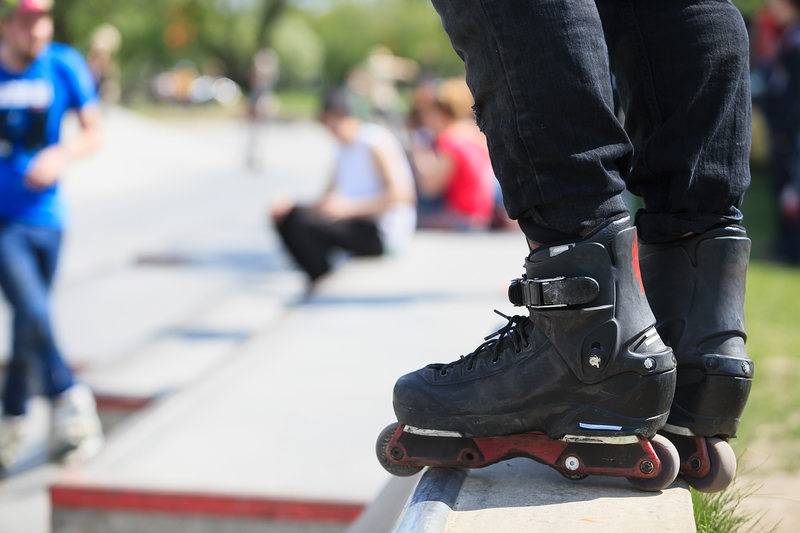Everything You Need to Know About Kinetic Lifting
In the ever-evolving world of fitness, kinetic lifting has become a buzzword among athletes, trainers, and enthusiasts. Whether you're new to the gym or an experienced lifter, understanding the principles of kinetic lifting can maximize your results, minimize injuries, and take your workouts to a whole new level. In this comprehensive guide, we'll explore what kinetic lifting is, its principles, benefits, correct techniques, common mistakes, recommended routines, and much more.
What is Kinetic Lifting?
Kinetic lifting refers to a training paradigm that emphasizes movement, momentum, and the optimal use of forces throughout dynamic lifts. Rather than simply moving a weight from point A to point B, kinetic lifting focuses on harnessing the energy and mechanics of your body and the load, resulting in more efficient and effective movements. This training strategy draws from the science of physics, particularly kinetics--the study of forces and motion in physical systems.
Synonymous with functional movement and athletic training, kinetic lifting is applied in both traditional and modern fitness settings, incorporating compound movements, plyometrics, Olympic lifts, and more. It's not only an approach for maximizing performance but also for achieving better biomechanics, injury prevention, and overall functional strength.
The Science Behind Kinetic Lifting
At its core, the science of kinetic lifting revolves around three key concepts: force, motion, and energy transfer. Unlike static isolation exercises, this lifting principle utilizes your entire body, engaging multiple joints and muscle groups simultaneously.
- Force: Kinetic lifts utilize both muscular force and external forces to propel weights through a range of motion.
- Momentum: By integrating deliberate acceleration and deceleration phases, you can generate greater power output and train stabilizer muscles.
- Energy Transfer: Similar to how athletes run, jump, or strike, the ability to transfer energy seamlessly from the ground up can enhance strength and power in kinetic lifting.
Understanding these principles allows you to select exercises and training modalities that mimic real-life activities and sports, making kinetic lifting a popular choice for athletes and those seeking practical strength.
Benefits of Kinetic Lifting
The advantages of kinetic lifting techniques go far beyond simple muscle building. Here are some compelling reasons to add kinetic movement lifts to your routines:
- Improved Functional Strength: Engages both major and stabilizing muscles, mimicking real-world movements for everyday strength.
- Enhanced Power and Explosiveness: By leveraging momentum and force, kinetic lifts help maximize your power output, which is essential for athletes in any sport.
- Increased Calorie Burn: Since kinetic lifting utilizes full-body movements, it burns more calories and boosts your metabolic rate.
- Better Balance and Coordination: Complex, multi-joint movements train your body's neuromuscular pathways, improving balance, agility, and control.
- Reduced Injury Risk: Properly executed, kinetic lifting strengthens tendons, ligaments, and stabilizer muscles, offering better joint protection and resilience to injuries.
- Improved Cardiovascular Health: The dynamic nature of kinetic lifting can also provide a cardiovascular benefit, especially when performed with minimal rest between sets.
Common Types of Kinetic Lifts
A kinetic lifting program can include a wide variety of exercises. Here are some of the most popular lifts and movements:
- Olympic Lifts: Exercises like the clean & jerk or snatch, which utilize explosive force and multiple muscle groups.
- Plyometric Movements: Box jumps, medicine ball throws, and clap push-ups, focusing on rapid, explosive energy.
- Compound Bodyweight Movements: Movements such as burpees, muscle-ups, and jumping lunges integrate kinetic force for full-body results.
- Powerlifting Exercises: Deadlifts, squats, and bench presses, when performed with acceleration and proper force generation.
- Kettlebell Swings: A classic example of generating power and momentum from the hips through to the arms.
Key Elements of Kinetic Lifting Technique
Mastering kinetic lifting technique requires a combination of understanding physics, body mechanics, and proper form. Here are some foundational elements to consider:
- Initiate Movement With the Correct Muscle Group: For kinetic exercises, always start with the primary muscle group (such as the glutes in a swing or the legs in a jerk).
- Use Controlled Explosiveness: Harness momentum deliberately--generate power without sacrificing technique.
- Maintain Neutral Spine and Core Stability: Core engagement is critical for transferring energy safely and efficiently.
- Synchronize Breathing With Movement: Proper breathing ensures oxygen delivery and helps stabilize lifts.
- Absorb and Redirect Force: In many kinetic lifts, you'll need to safely absorb impact (such as landing from a jump) and then redirect energy into the next movement.
Step-by-Step: How to Perform a Basic Kinetic Lift
Let's break down a popular kinetic movement: the kettlebell swing. This exercise demonstrates the fundamental principles of kinetic lifting.
- Start Position: Stand with your feet shoulder-width apart, holding a kettlebell with both hands in front of you. Engage your core and keep your back flat.
- Hinge Movement: With a slight bend in your knees, push your hips back, swinging the kettlebell between your legs. This movement comes from *hip-hinging*, not squatting down.
- Explosive Drive: Drive your hips forward, straightening your back and legs in one explosive motion. Use this kinetic force to propel the kettlebell up to chest height.
- Controlled Descent: Allow the kettlebell to fall back naturally, guiding it between your legs and repeating the movement, maintaining rhythm and tension throughout.
- Finish: After your final rep, bring the kettlebell to a controlled stop by returning to your start position.
*Tip:* Focus on the explosive hip thrust--it's the driving force, not the arms, that lifts the weight. Avoid arching your back or letting the kettlebell pull your shoulders down.
Safety Tips for Effective Kinetic Lifting
Like any high-intensity training, kinetic lifting poses certain risks if not performed properly. To ensure your safety, keep in mind:
- Always Warm Up Thoroughly: Dynamic stretches and light cardio prepare your muscles, joints, and central nervous system for explosive movement.
- Progress Gradually: Start with lighter weights and slow, controlled movements before increasing speed or load.
- Prioritize Form: Never sacrifice technique for weight or repetitions. Poor form increases injury risk.
- Use Proper Equipment: Wear appropriate footwear and make sure your space is clear of obstacles to avoid accidents.
- Rest as Needed: Allow adequate recovery between sets and sessions, especially with high-intensity kinetic lifts.
Common Mistakes in Kinetic Lifting
Understanding some frequent pitfalls can help you avoid injuries and enhance performance:
- Using Too Much Weight Too Soon: Building proper kinetic movement takes time. Overloading prematurely leads to poor mechanics.
- Inefficient Energy Transfer: Failure to engage the core or synchronize upper and lower body leads to power leakage.
- Improper Joint Alignment: Overextension or misalignment, especially in the spine and knees, places excessive strain on joints.
- Neglecting Eccentric Control: Don't just focus on the lifting (concentric) phase--controlling the lowering (eccentric) movement is just as important for safety and muscle growth.
Building Your Own Kinetic Lifting Routine
Customizing a kinetic lifting workout depends on your personal goals, experience, and any pre-existing injuries. A balanced program might include:
- Warm-Up: 5-10 minutes of dynamic stretching and light cardio (jump rope, jogging).
- Technical Drills: Practice skill elements of lifts (e.g., hip hinges, jump landings, or press technique).
- Core Compound Movements: Olympic lifts, deadlifts, kettlebell swings, or box jumps--focusing on power and technique.
- Accessory Stability Work: Planks, single-leg exercises, or rotational drills to fortify stabilizer muscles.
- Cool Down: Static stretching and mobility work to aid recovery and flexibility.
Aim for 2-4 sessions per week, alternating intensity and working with a certified coach if you're new to these advanced movements.
Kinetic Lifting vs Traditional Weightlifting
| Kinetic Lifting | Traditional Weightlifting |
|---|---|
| Emphasizes explosive, dynamic motion with momentum | Focuses on controlled, often slow muscle contractions |
| Full-body, multi-joint movements | Often utilizes isolation or single-joint exercises |
| Improves athletic performance and functional fitness | Excellent for hypertrophy and targeted strength |
| Requires advanced technique, balance, and coordination | May be more accessible to beginners for simple lifts |
| Burns more calories and develops power | Promotes muscle definition and endurance |
Both styles offer unique benefits, and many effective programs incorporate elements of both. However, kinetic lifting workouts are often chosen for building real-world, practical strength and dynamic athleticism.
Who Should Try Kinetic Lifting?
- Athletes: To enhance explosive power, agility, and functional movement patterns specific to their sport.
- Fitness Enthusiasts: Those who want variety and challenge in their routines and wish to improve overall body coordination.
- Rehabilitation Patients: Under professional supervision, kinetic movements can help restore joint function and neuromuscular control.
- Anyone Avoiding Plateaus: Kinetic lifting keeps training fresh and busts through traditional strength plateaus.
*Note*: Beginners should always learn proper form under guidance to avoid common kinetic lifting injuries.
Essential Equipment for Kinetic Lifting
While many kinetic exercises use bodyweight, a varied equipment selection increases the challenge and brings new dimensions to your training:
- Kettlebells: Perfect for swings, snatches, and Turkish get-ups.
- Barbells & Weight Plates: Needed for Olympic-style lifts and powerlifting movements.
- Medicine Balls: Ideal for throws, slams, and rotational drills.
- Boxes or Platforms: Used for jumps and depth drops.
- Resistance Bands: Add dynamic resistance for increased muscle activation.
Investing in quality equipment ensures safety, performance, and studio versatility for your kinetic lifting sessions.
Programming Tips for Maximum Results
To reap the full benefits of kinetic movement exercises, structuring your training with the following considerations is vital:
- Vary the Intensity: Mix high-intensity power sets with lower-intensity stability or technique-focused drills.
- Include Recovery: High-impact movements demand adequate rest and recovery days to prevent overtraining.
- Track Your Progress: Record weights, reps, form cues, and rest intervals to monitor improvement.
- Cross-Train: Combine kinetic lifting with traditional strength and mobility work for a complete fitness profile.
Examples of Kinetic Lifting Workouts
If you're ready to incorporate this dynamic method, try this sample workout:
- Dynamic Warm-Up: 5 minutes of jumping jacks, arm circles, and leg swings
- Barbell Power Cleans: 4 sets of 6 reps
- Kettlebell Swings: 4 sets of 15 reps
- Box Jumps: 3 sets of 10 reps
- Medicine Ball Slams: 3 sets of 12 reps
- Cooldown: Stretching for major muscle groups
Conclusion: Why Kinetic Lifting Should Be Part of Your Training
In a rapidly changing fitness landscape, kinetic lifting offers an exciting, science-backed approach to building power, strength, and real-world functionality. Integrating kinetic lifting routines into your training can reduce injury risk, overcome plateaus, and take your performance to new heights. Remember, always prioritize technique, safety, and progressive overload for long-term success. Whether you're looking to boost your athletic edge or simply want a more engaging workout, kinetic lifting may be the transformative element you've been seeking.
Ready to get started? Consult with a certified trainer, start light, and focus on mastering technique before adding weight or complexity to your kinetic lifts.
Embrace the power of kinetic movement today - your strongest, most athletic self awaits!





